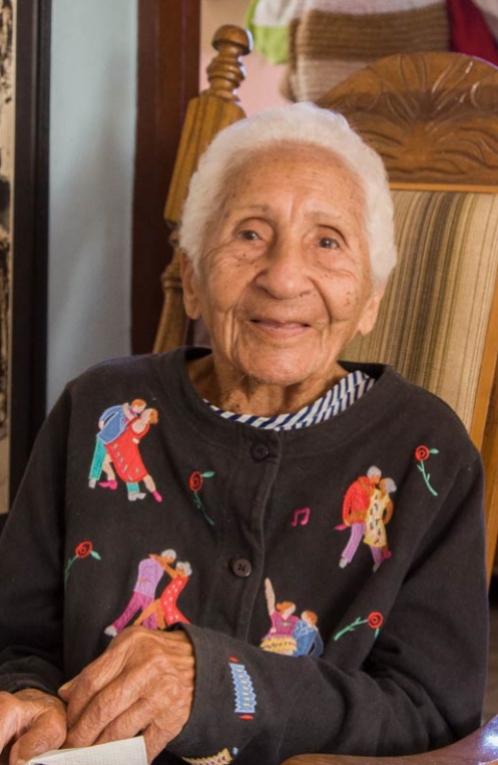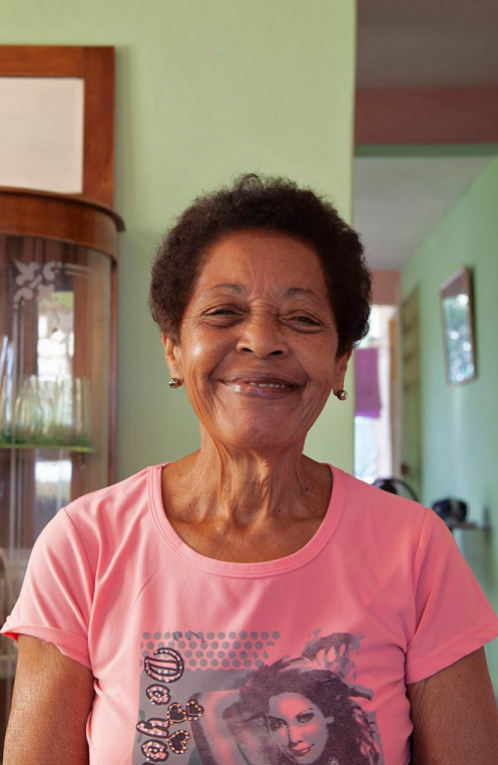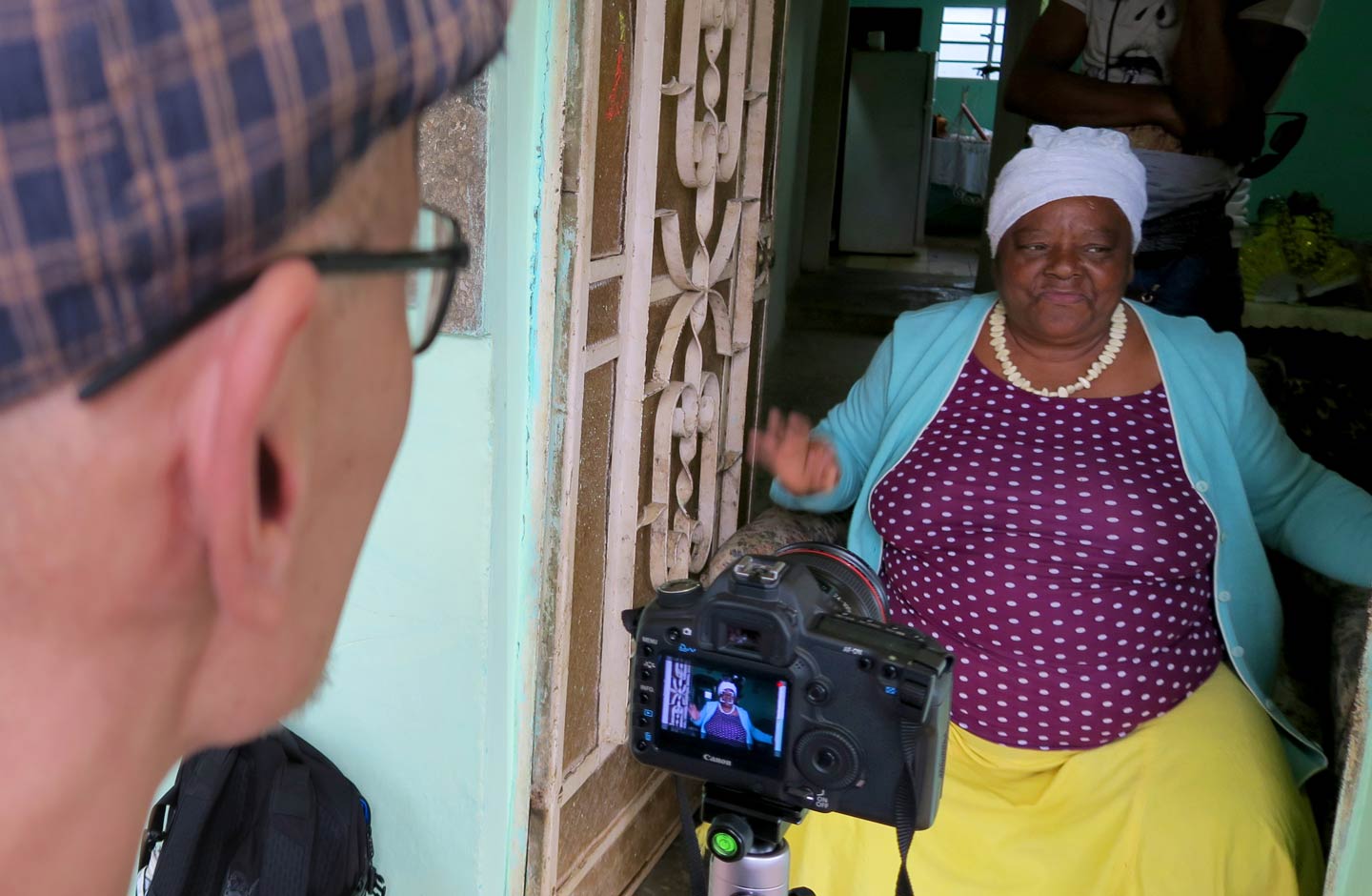Project Partners
Ed Pien





Exhibition Partner

Publication Partners
Ed Pien





Carlos Yep















Ongoing since 2014 in San Agustín, La Lisa, Cuba.
Project commission, co-production and representation.
Video and installation based social practice project involving regular encounters between the artist and 13 elderly people from San Agustin, a suburb of Havana.

Ed Pien is a Canadian artist based in Toronto. He has been making art for over early 40 years. Born in Taipei, Taiwan, he immigrated to Canada with his family at the age of eleven. See his website.
(From artist project statement)
What then is time? Provided no one asks me, I know, If I want to explain it to an enquirer, I do not know. But I confidently affirm myself to know that if nothing passes away there is no past time, and if nothing arrives there is no future time, and if nothing existed there would be no present time.
Augustine of Hippo, extract from the Confessions (397 - 98 CE); trans. Henry Chadwick (Oxford: Oxford University Press, 1992) 230 - 32; 243
Time is more than a philosophical concept and quantifiable construct. No one escapes time. Every one is compelled and impacted by it. Time nurtures, takes it toll; time may help us to forget or console and heal. By sharing durations of time and being self-reflexive of time’s impact, can we make better sense of it, do we feel having more or less control over it?
Since 2014, I have been working with a small group of Elders in St Agustin, Cuba. Together, the Elders and I engage in discussions that explore the notion of time, documented over time. This project is ongoing. Its duration will be determined by death,—either by mine or theirs, or when they lose interest in continuing to work with me.
Ed Pien
Present: Past/Future is an exploration of the perception of time that evolves in its methodology and form as time goes by. The project is a dialogue between the artist and a small group of elderly people who have spent their entire life in Cuba. It formalizes moments shared by the artist and the participants while giving them a voice about their life experiences in the present, from their perception of their past and through their anticipation of the future. Through this journey the project portrays a certain history of Cuba - pre and post revolution – and of contemporary life in Havana suburb of San Agustin.
San Agustín is a 4 km2 neighbourhood in the western periphery of Havana with more than 40,000 inhabitants. Built on large fruit farms (fincas) before the 1950s, it became San Agustín, a residential area for mostly white middle class residents between 1952 and 1954. In the 1960s, San Agustín saw major changes: extended to the nearest neighbourhood, Ermita, it doubled its area and its population dramatically increased.
San Agustín’s architecture is comprised of a mix of a few small neo-colonial farms and Art Nouveau family houses and a mostly 1970s prefabricated low-rise buildings (Soviet Union models). San Agustin and Alamar—on the other side of Havana—are two suburban neighbourhoods that illustrate the massive urban redevelopment undertaken around Havana in the 1970s through the Microbrigadas, a collective form of self-help housing created by the Revolution. San Agustin is now diverse in demography from an ethnic and social point of view: government employees and retirees, independent workers, etc.


(Above - right column photographs from top)
(From top to bottom - left column portrait gallery)

First exhibition of the project at the JS McLean Centre for Indigenous & Canadian Art, the Art Gallery of Ontario (AGO) Spring, 2022
A special thanks for making this exhibition possible to Wanda Nanibush, Curator, Indigenous Art and Georgiana Uhlyarik, Fredrik S. Eaton Curator, Canadian Art. To Renée van der Avoird, Assistant Curator Indigeneous and Canadian Art and Renata Azevedo Moreira Assistant Curator Indigeneous and Canadian Art for working with us on the preparation of the exhibition along with Hillary Taylor, Project Manager, Exhibitions, Kathleen Mc Lean, Assistant Curator, Talks Programs & Screenings, Education & Programming and the multiple talented collaborators of the AGO teams.
An ongoing multifaceted publication will accompany the project along its developments. It is copublished by Le Centre Sagamie and Elegoa Cultural Productions with support from the Art Gallery of Ontario, Birch Contemporary(Toronto), Pierre-Francois Ouelette Art Contemporain(Montreal), Carlos Yep and Ed Pien. Featuring photos and quotes from Seniors participants, the first chapter is an artist book. It will be available in shopAGO and in bookstores across Canada as of June 2022, for $40cad. A second chapter will be launched in the fall od 2022. It will include essays by by Dannys Montes de Oca Moreda (independant curator and writer), Renée van der Avoird (Assistant Curator Indigenous and Canadian Art, Art Gallery of Ontario) and a conversation between Yohayna Hernández González (independent dramaturge and writer), Ed Pien and Catherine Sicot is expected in fall 2022.
The project was commissioned in 2014 by Catherine Sicot and benefited from the support and local network of LASA (Laboratorio Artístico de San Agustín) Cuba.
The project is co-produced and funded by Ed Pien with committed, ongoing financial support from Catherine Sicot and Elegoa Cultural Productions with additional funding in 2017, 2018 and 2019 from the Canada Council for the Arts, New Chapter Program as part of part Facing: The Stories of others, a series of commissions and exhibitions curated by Catherine Sicot. The project also received support form the Canada Council for the Arts for the artist production in 2022 and 2023 (Explore and Create Program). In 2015, this project received the support of The K.M. Hunter Foundation (Canada).
The project was included in La Primavera del Amor, Havana, 2015
Photo credits: Ed Pien, Claudio Pelaez Sordo, Johannes Zits, Reynier Guerra Capote and Catherine Sicot.
A note on Cuba June 13, 2022:
In light of the current economic crisis and increasing political repression in Cuba, we want to acknowledge the plight of the Cuban people. On July 11, 2021, protestors across the country took part in peaceful marches during which they voiced their demand for food and freedom. This was one of the largest popular uprising in the country since the beginning of the Cuban Revolution, and hundreds of participants (including artists and minors) were arrested. Many are still detained and face years of imprisonment for expressing political views that do not align with those of the government.
Project Partners
Ed Pien





Exhibition Partner

Publication Partners
Ed Pien





Carlos Yep


